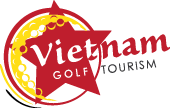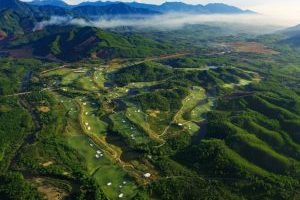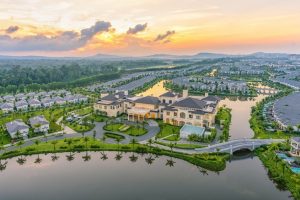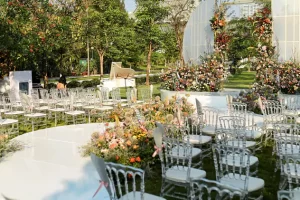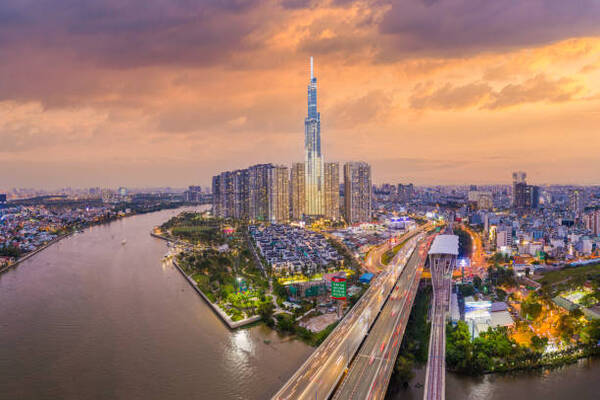
Ho Chi Minh City is taking strategic steps to explore new tourism products aimed at capitalizing on the post-merger potential with Binh Duong and Ba Ria-Vung Tau. The city is positioning itself as a dynamic destination by developing innovative offerings that cater to a wide range of interests, from leisure and wellness to industrial and cultural tourism. By leveraging the synergies between these regions, the city aims to attract a diverse visitor base, boost local economies, and solidify its role as a key tourism hub in Vietnam.
Vietnam’s Ho Chi Minh City is rapidly emerging as a key tourism hub in Southeast Asia, with an increasing focus on innovation and diversification to attract both domestic and international visitors. Now inclusive of Binh Duong and Ba Ria-Vung Tau provinces following their administrative merger, the city is positioning itself as a vibrant destination with a diverse range of tourism offerings. These areas collectively form a unique “triangle of identity” in Vietnam, each with distinct characteristics that complement one another.
At the heart of Ho Chi Minh City’s tourism strategy is its city centre, which embodies urban vibrancy and creativity. This area is seen as the driving force for cultural and commercial tourism, hosting a wealth of attractions, from historical landmarks to thriving markets, and a growing number of high-end hotels and restaurants. Moving outward from the city centre, Binh Duong stands as a hub for industrial and craft tourism, as well as a promising location for Meetings, Incentives, Conferences, and Exhibitions (MICE). Finally, Ba Ria-Vung Tau is fast becoming a prominent center for leisure and wellness tourism, boasting scenic beaches, luxury resorts, and spa destinations. Together, these regions offer a comprehensive tourism experience that appeals to a wide variety of traveler interests.
The Department of Tourism in Ho Chi Minh City is dedicated to developing new tourism products to enhance the city’s appeal. A recent collaboration with Doi Dep JSC, known for its tea industry contributions, highlights one of the most exciting new initiatives in the city’s tourism scene. The partnership led to a famtrip in Lam Dong province, focused on introducing “tea culture spaces” in luxury hotels across the city. During this trip, participants had the opportunity to tour the 1927 Tea Factory, where they learned about the tea production process, and participated in networking events at a local golf resort, bringing together key figures from the hotel, travel, healthcare, and tea industries. This experience underscores Ho Chi Minh City’s goal of promoting Vietnamese culture while also developing unique, culturally enriched tourism products aimed at high-end visitors.
In addition to promoting tea culture, the city has also hosted several survey trips aimed at exploring new tourism opportunities. One significant area of growth is the coastal region of Vung Tau, which aims to become a world-class, smart, and green tourism hub in the next five years. Experts are recommending a strategic shift to enhance the area’s appeal, including the development of night-time economy models and specialized service zones. Proposed attractions include the Tam Giac Beer Park, a vibrant food street, and a shopping and entertainment area along Trung Trac and Trung Nhi streets. Furthermore, the addition of beachfront cafes and rooftop bars is expected to elevate the city’s tourism offerings, ensuring a blend of relaxation and entertainment.
Another key opportunity for Ho Chi Minh City lies in its proximity to a number of industrial and craft tourism sites. Binh Duong, in particular, offers rich opportunities for tourists to explore traditional crafts, such as lacquerware and ceramics, or to visit the Yakult Factory for an industrial tourism experience. These attractions can be paired with educational and cultural tours that offer a deeper connection to the region’s heritage and industrial achievements. The introduction of short-day tours that combine these experiences is expected to further expand the tourism landscape, appealing to those interested in a diverse range of activities.
There is great potential in launching interconnected routes that link the three areas of Ho Chi Minh City, Binh Duong, and Ba Ria-Vung Tau. These itineraries would cater to short-stay visitors and could include beach excursions to Ho Tram and Long Hai, nature retreats in Binh Chau and Con Dao, or visits to craft villages, orchards, and eco-tourism sites in Binh Duong. The ease of access between these destinations makes them ideal for short, experience-rich trips, encouraging visitors to explore more of the region within a limited timeframe.
Additionally, the administrative merger has bolstered the city’s MICE tourism potential. The city now offers a wide range of business events that can be seamlessly paired with leisure activities in nearby coastal or ecological destinations. By combining business and tourism experiences, Ho Chi Minh City is further positioning itself as a prime destination for corporate events, conferences, and incentive travel.
To complement these growing tourism segments, the city is also developing themed tourism products such as industrial and craft village tours in Binh Duong, spiritual and wellness tourism in Ba Ria-Vung Tau, and medical tourism that connects Ho Chi Minh City’s top-tier hospitals with nearby coastal resorts. These themed offerings aim to attract a broader range of customers, catering to those seeking specialized experiences in wellness, education, and culture.
Experts believe that the merger of these three areas has created significant growth opportunities in the domestic tourism market, particularly in weekend, short-stay, and seasonal travel. With an expanding range of tourism products and services, Ho Chi Minh City is poised to become a more diverse and attractive destination for travelers from around the world.
Ho Chi Minh City is well-positioned to thrive as a leading tourism destination in Southeast Asia. The city’s unique “triangle of identity” encompassing urban vibrancy, industrial and craft tourism, and leisure and wellness offerings, is set to create a dynamic tourism ecosystem that will continue to grow and diversify. With continued innovation and collaboration between public and private sectors, Ho Chi Minh City is on track to become an even more compelling choice for tourists seeking varied, culturally immersive, and high-quality experiences.
The post Vietnam’s Ho Chi Minh City Unveils Innovative Tourism Products To Maximize Post-Merger Growth And Transform Regional Travel appeared first on Travel And Tour World.
The article "Vietnam’s Ho Chi Minh City Unveils Innovative Tourism Products To Maximize Post-Merger Growth And Transform Regional Travel" was originally published on https://www.travelandtourworld.com/news/article/vietnams-ho-chi-minh-city-unveils-innovative-tourism-products-to-maximize-post-merger-growth-and-transform-regional-travel/
